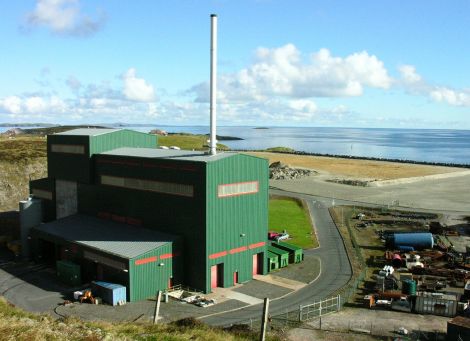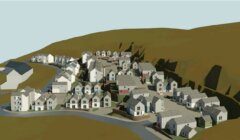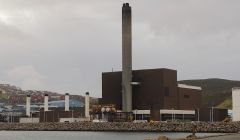Energy / Hopes that more properties could benefit from Lerwick District Heating scheme in future
THERE are hopes that more properties could connect to the Lerwick districting heating scheme in the future, with a Scottish Government push to reduce emissions in homes and buildings likely to help the cause.
Neville Martin, working as a project consultant for operator Shetland Heat Energy & Power (SHEAP), told a meeting of Lerwick Community Council that a planned upgrade to the Energy Recovery Plant at Gremista could provide more power to the system – and potentially offer heat to the hundreds of new homes planned for Staney Hill.
He also said there could also be potential for heat pumps to be provide more power in the future, highlighting that sea water or sewage could be possible sources.
“We are still working on a few ideas,” Martin said.
The district heating scheme, operated by SHEAP, runs pipes all across the town, supplying water to heat homes, schools, retail and care homes. The first customer connection went live in 1998.
Over 1,200 customers are supplied through the network of over 30km of pipeline.
The heat is generated from the Energy Recovery Plant, which burns domestic and commercial rubbish from Shetland and Orkney, while there is also an oil-fired boiler station used to meet peak demand and for when the incinerator is on downtime.
Martin, who is the former general manager of the scheme, told members of Lerwick Community Council on Monday night that it is not cost effective to extend the network to add a small number of properties, despite it not running at full capacity.
But he confirmed there have been discussions between SHEAP and Hjaltland Housing Association over the hundreds of new homes planned for Staney Hill.
SHEAP is hopeful that an upgrade to the Energy Recovery Plant could bring another megawatt into the system, and Martin said this could – in theory – power the new Staney Hill homes.
Become a member of Shetland News
Following a question from Lerwick councillor Amanda Hawick about expanding the scheme into areas outside of Lerwick such as Tingwall, Martin said it is not likely that even bringing it into Gulberwick would be cost effective.
“Laying these pipes are very expensive,” he said.
Martin, though, pinpointed Brae as a possible site outside of Lerwick for a district heating scheme due to its built-up nature which includes a large school, care home, hotel and housing.
Martin did note that the demand on the district heating scheme from newer housing schemes, such as Quoys, tends to be about one third less than older homes.
He also said he was not aware of any intention from Shetland Charitable Trust to put any more funding into SHEAP.
SHEAP executive director Derek Leask added that the Lerwick scheme has been heralded as model for other potential community heating projects outside of Shetland.
In the next Scottish Parliament almost £1.6 billion will be made available for heat and energy efficiency projects across Scotland.
Part of this thinking is to implement more heat source pumps. Water source heat pumps, for example, work by extracting heat from a body of water and converting it into useful energy.
Martin said seawater could be a possible option, while the SHEAP headquarters is located near to a key sewage link which runs to Rova Head.
Become a member of Shetland News
Shetland News is asking its many readers to consider paying for membership to get additional features and services: -
- Remove non-local ads;
- Bookmark posts to read later;
- Exclusive curated weekly newsletter;
- Hide membership messages;
- Comments open for discussion.
If you appreciate what we do and feel strongly about impartial local journalism, then please become a member of Shetland News by either making a single payment, or setting up a monthly, quarterly or yearly subscription.












































































